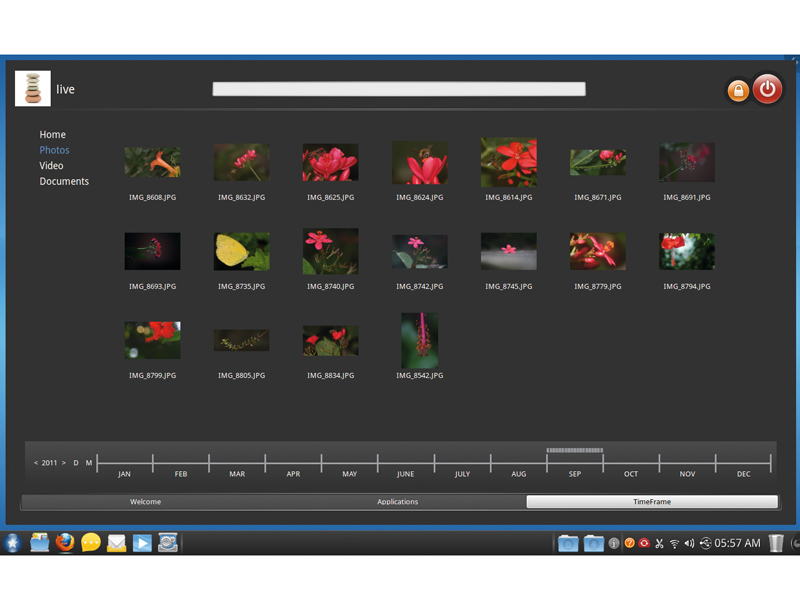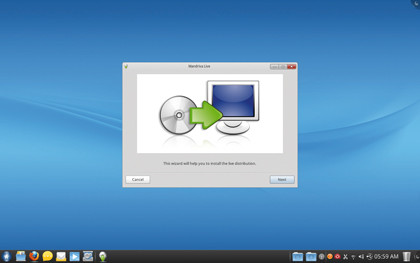How Mandriva was built
Sacked developers, financial headaches and technology trials - a tough year for Mandriva

The distro now known as Mandriva has been making headlines since its inception - unfortunately not all of the press has been flattering. It's the distro the community first loved, and now just loves to hate.
Way before Ubuntu and the current slew of desktop-friendly distros - when running Linux on your desktop was a measure of your geek cred - the technologically challenged turned to Mandriva.
Over the years it grew in popularity, one man went on to form a firm - a company that would later show him the door.
But there's more to Mandriva than what goes on in the boardroom. It's still one of the easiest distros for Linux newbies. Sure, Mandriva's fortunes have been on a downward spiral for quite some time, but the new team has managed to shrug off cash-flow problems and technological traumas, and its latest release is filled to the brim with features.
A reversal of fortunes
Mandriva started life as Linux-Mandrake way back in 1998. The first version was based on Red Hat 5.1 and it was the first distro to bundle KDE's 1.0 release. Features such as the ability to auto-mount CDs without messing around with configuration files brought 'convenience' to Linux distros.
The project was a success and later that year lead developer Gaël Duval, along with a bunch of other developers, created MandrakeSoft. In 2001 the company decided to go public, announced an IPO (Initial Public Offering), and began trading on the Marché Libre exchange in Paris.
It faced its first major cash issue in late 2002 and asked its users to bail it out by subscribing to a paid service offering extra benefits, such as early access to releases and special editions. It wasn't enough and in January 2003 MandrakeSoft filed for "déclaration de cessation des paiements" - the French equivalent of bankruptcy protection.
Sign up for breaking news, reviews, opinion, top tech deals, and more.
At the end of 2003, MandrakeSoft announced its first quarterly profit and, in March 2004, a French court approved its plan to emerge from bankruptcy and return to normal operations.
By now Mandrake had grown popular enough to attract the attention of the US publisher Hearst Corporation, which owned the trademark of the comic-book character Mandrake the Magician. Hearst sued MandrakeSoft for trademark infringement in the distro's name, as well as for its hardware configuration tool Lothar, another of Hearst's characters. MandrakeSoft lost and was forced to concatenate Mandrake and Linux to Mandrakelinux and change its logo.
Over the years, MandrakeSoft acquired a host of companies. Of note, were Edge-IT, a French corporate support company that was to have a much larger impact on the distribution later on, and the Brazilian Linux distribution Conectiva, after which it changed the name of the company to Mandriva and its distribution's name to Mandriva Linux.
In 2006, after several more acquisitions, including the Lycoris distro and the enterprise software infrastructure company Linbox, Mandriva laid off several employees including Duval, the company's lead developer and co-founder. Amidst all the booing, the company continued spitting out distro releases and created a niche for itself in the so-called BRIC countries (Brazil, Russia, India and China), as well as France and Italy.
It continued hovering among the top 10 distros on Distrowatch.com but struggled to keep its balance sheet in the black, even after a round of funding in 2007. In May 2010, Mandriva announced it was up for sale, claiming that "selling the enterprise was the only alternative to closing it down completely".
The following month, the company announced it had been saved, yet again, by new investors and in September Mandriva sold a controlling stake to a Russian company called NGI, and announced that while it intended to continue working on its server products in Europe, development of its desktop distro would be moved to one of the BRIC countries.
Following the deal, Mandriva liquidated its subsidiary Edge-IT and laid off its employees. It later emerged that many of the core Mandriva developers were technically employees of Edge-IT. Soon afterwards, those former employees forked Mandriva and created the non-commercial Mageia project.
The Mandriva community had in the past suggested that the distribution should be split in two, much like Red Hat Enterprise Linux and Fedora, but the plans never materialised. In a blog post, Mandriva's then CEO Arnaud Laprévote assured users that "Mandriva is alive" and briefly mentioned new products, including Mandriva 2011, which was released on August 28 this year.
New team

After the sale to NGI, Mandriva's structure changed: the CEO was replaced by a board and Arnaud Laprévote took over as president. In July 2011 he was replaced by Dominique Loucougain. Alongside him, Dmitry Komissarov and Valentina Gorina make up the Mandriva board.
Komissarov is also CEO of the Russian firm PingWin Software, an active member of the Russian Association of Free Software. He explains that, as of now, there are three groups of developers working on Mandriva, in France, Brazil and Russia.
The Russian team, headed by ROSA Laboratories, focuses on the design elements of the distro and its interface. It employs UI designers and a large number of testers. The Brazilian team at Conectiva concentrates on the development of the platform, while the French team maintains infrastructure and provides support to installed systems in the enterprise and government. A team of developers from Russia and Brazil are also working on a new build-system for Mandriva.
Eugeni Dodonov from the Brazilian team was the release manager of Mandriva 2011, until he left for Intel in July 2011, and passed the baton on to Denis Koryavov of ROSA Labs. Komissarov insists that having a team of developers spread across three countries doesn't hinder development. He adds that although the Russian team was the last to join, having a clearly defined scope for all the teams not only helped them get started on Mandriva 2011 without any delay, but also helps them collaborate with each other.
This is evident from Dodonov's reply to a comment on the Mandriva blog, where he wrote that the Digikam photo manager, which was included in the early beta versions, was replaced by Shotwell on the request of ROSA Labs for design and usability concerns.

With almost two decades of writing and reporting on Linux, Mayank Sharma would like everyone to think he’s TechRadar Pro’s expert on the topic. Of course, he’s just as interested in other computing topics, particularly cybersecurity, cloud, containers, and coding.